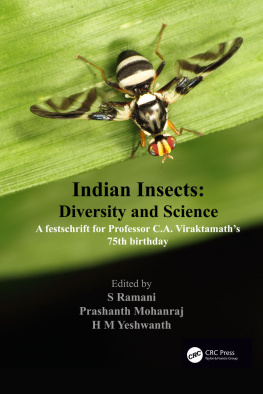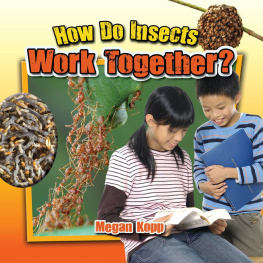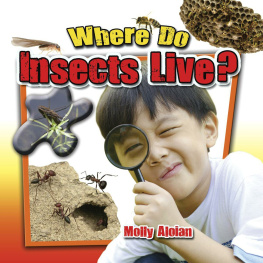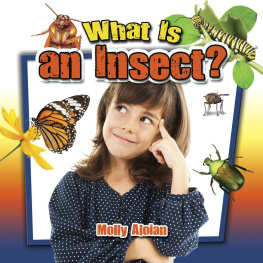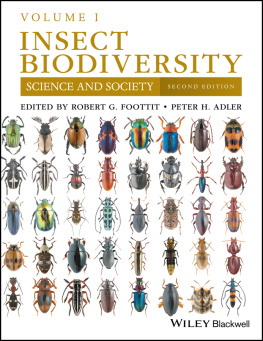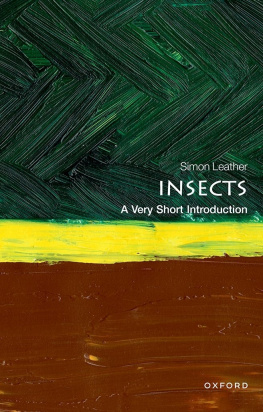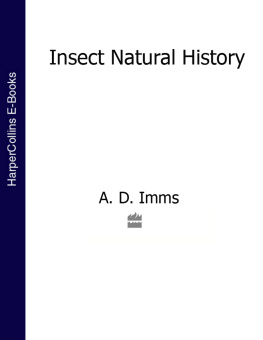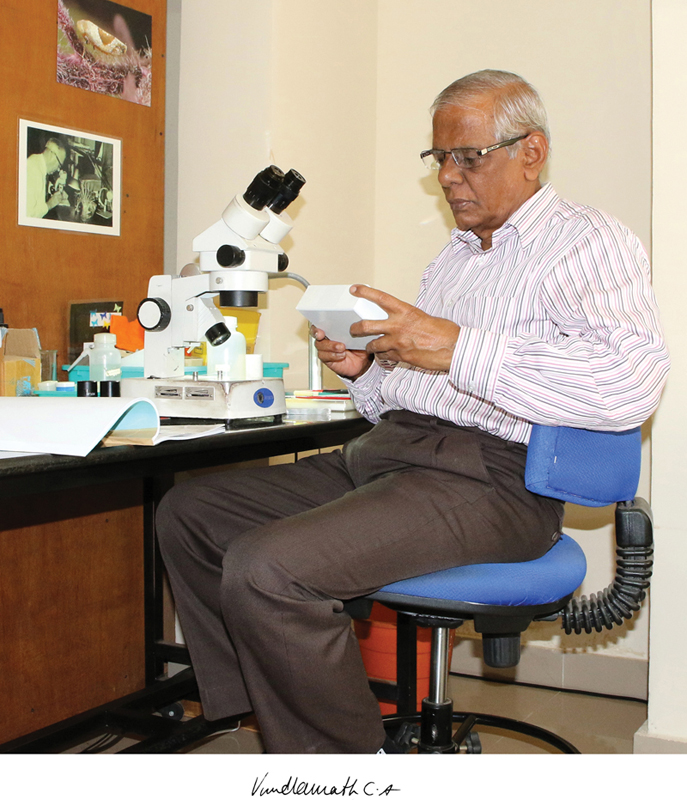Contents
Page List
Guide

Indian Insects
Indian Insects
Diversity and Science
A Festschrift for Professor C. A. Viraktamaths 75th Birthday
Edited by
S. Ramani
Prashanth Mohanraj
H. M. Yeshwanth
CRC Press
Taylor & Francis Group
6000 Broken Sound Parkway NW, Suite 300
Boca Raton, FL 33487-2742
2020 by Taylor & Francis Group, LLC
CRC Press is an imprint of Taylor & Francis Group, an Informa business
No claim to original U.S. Government works
Printed on acid-free paper
International Standard Book Number-13: 978-0-3671-8413-1 (Hardback)
This book contains information obtained from authentic and highly regarded sources. Reasonable efforts have been made to publish reliable data and information, but the author and publisher cannot assume responsibility for the validity of all materials or the consequences of their use. The authors and publishers have attempted to trace the copyright holders of all material reproduced in this publication and apologize to copyright holders if permission to publish in this form has not been obtained. If any copyright material has not been acknowledged please write and let us know so we may rectify in any future reprint.
Except as permitted under U.S. Copyright Law, no part of this book may be reprinted, reproduced, transmitted, or utilized in any form by any electronic, mechanical, or other means, now known or hereafter invented, including photocopying, microfilming, and recording, or in any information storage or retrieval system, without written permission from the publishers.
For permission to photocopy or use material electronically from this work, please access www.copyright.com (http://www.copyright.com/) or contact the Copyright Clearance Center, Inc. (CCC), 222 Rosewood Drive, Danvers, MA 01923, 978-750-8400. CCC is a not-for-profit organization that provides licenses and registration for a variety of users. For organizations that have been granted a photocopy license by the CCC, a separate system of payment has been arranged.
Trademark Notice: Product or corporate names may be trademarks or registered trademarks, and are used only for identification and explanation without intent to infringe.
Visit the Taylor & Francis Web site at
http://www.taylorandfrancis.com
and the CRC Press Web site at
http://www.crcpress.com
My work enraptures but utterly exhausts me.To know that no one before you has seen an organ you are examining, to trace relationships that have occurred to no one before, to immerse yourself in the wondrous crystalline world of the microscope, where silence reigns, circumscribed by its own horizon, a blindingly white arenaall this is so enticing that I cannot describe it.
Letter to his sister Elena
Vladimir Nabakov (1945)
Systematists will have only to decide (not that this will be easy) whether any form be sufficiently constant and distinct from other forms, to be capable of definition, and if definable whether the difference be sufficiently important to deserve a specific name.
Origin of Species
Charles Darwin (1858)
Alice explained, I can tell you the names of some of them.
Of course they answer to their names? the Gnat remarked carelessly.
I never knew them do it.
Whats the use of their having names the Gnat said, if they wont answer to them?
No use to them, said Alice; but its useful to the people who name them, I suppose. If not, why do things have names at all?
Through the Looking Glass
Lewis Carroll (1871)
Contents
K. N. Ganeshaiah
C. Selvakumar, K. A. Subramanian, and K. G. Sivaramakrishnan
K. A. Subramanian and R. Babu
R. Babu, K. G. Sivaramakrishnan, and K. A. Subramanian
Rajamani Swaminathan and Tatiana Swaminathan
Sunil Joshi
R. Sundararaj, K. Selvaraj, D. Vimala, and T. Venkatesan
S. Salini
S. Manickavasagam and S. Palanivel
K. Rajmohana and Sunita Patra
Martin Streinzer
P. Girish Kumar, Arati Pannure, and James M. Carpenter
David L. Pearson
J. Poorani
K. D. Prathapan
Krushnamegh Kunte, Dipendra Nath Basu, and G. S. Girish Kumar
K. J. David, S. Ramani, and S. K. Singh
Kumar Ghorpad
Harshada H. Sant and Sanjay P. Sane
Renee M. Borges, Joyshree Chanam, Mahua Ghara, Anusha Krishnan, Yuvaraj Ranganathan, Megha Shenoy, Vignesh Venkateswaran, and Pratibha Yadav
In the Agricultural Colleges the aim is to train farmers and fruit growers and not entomologists.. they should have just a general knowledge of the external anatomy of insects so as to be able to place the insects at least in their orders. This amount of systematic work is quite sufficient for them.
C. C. Ghosh, Asst. to the Imperial Entomologist, Pusa (1919)
During this meeting we have been constantly reminded of the very great difficulty of getting our specimens identified. We do want an institute such as the British Museum (Natural History) where specialists can work and our insects be identified.. Without pure science we cannot go very far with our applied science.
M. Afzal Husain, Supernumerary Entomologist, Pusa (1919)
The last subject taken up for discussion at the Third Entomological Meeting at Pusa in February, 1919 was The Organization of Entomological Work in India. When initiating the discussion on this subject, T. B. Fletcher, the then Imperial Entomologist to the Government of India, told the gathering of entomologists from across the country that after considerable thought, he felt that entomological work, particularly entomological research had to be improved in the country. The antithetical views appearing as the epigraph above formed part of this discussion. Since then, Indian entomology has been perpetually plagued by this Janus-faced approach to insect taxonomy and systematics, the reverberations of which continue to haunt us to this day.
Linnaean taxonomy was introduced during Linnaeuss time to India by J. G. Koenig, a private student of his, who came to India in 1767. He was followed by I. K. Daldorff, a pupil of Fabricius, who came to India in 1790. This early start, however, failed to lend the necessary fillip to the development of indigenous expertise in insect taxonomy on Linnaean principles in India. Unfortunately, this situation did not improve either during the period of British rule or even after the country gained political independence in the mid twentieth century. Ironically, while a number of British entomologists worked on the taxonomy of Indian insects, only a handful of Indian entomologists developed the necessary expertise to work independently on taxonomy. This expertise was not, however, passed on and did not foster succeeding generations of home grown entomologists. Insect taxonomy remained provincial and dependent on metropolitan science. The British Museum (Natural History), London, was the main institution on which Indian entomologists largely depended for the determination of the taxonomic identity of insects. This situation was to change dramatically in the late twentieth century as the BM (NH), now the Natural History Museum, at London, changing policy, began to charge (exorbitantly for a developing economy) for their identification services. If the country was not to lose scarce foreign exchange reserves for the identification of large numbers of insect specimens, the necessary capabilities had to be built locally.

